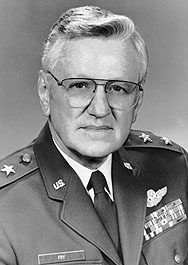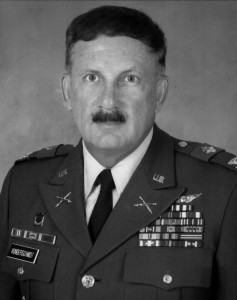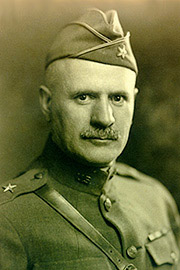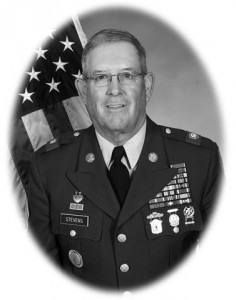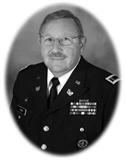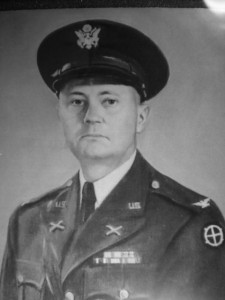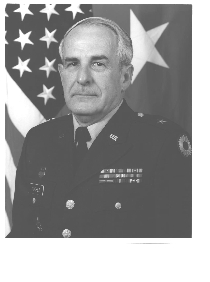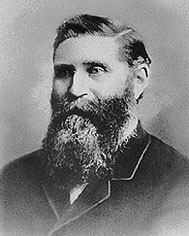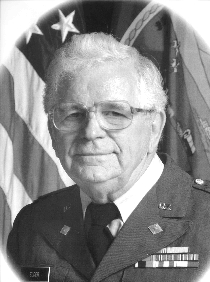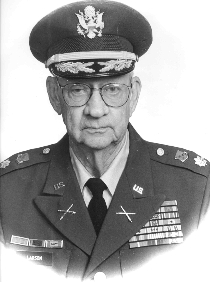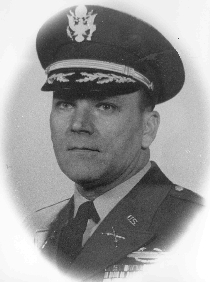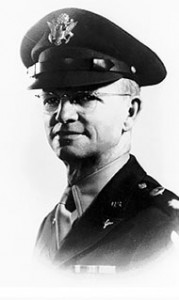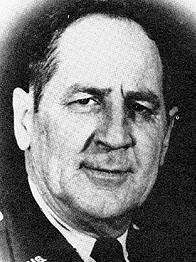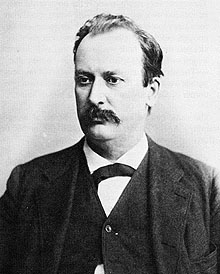This Regiment dates its origin with the Lawrence Massacre. Some time prior to that heartrending atrocity, Gov. Carney had received authority from the War Department to organize a cavalry force, to be devoted to the protection of the then exposed border of Kansas. Town after town had been sacked and burned; hundreds of Kansas men robbed and murdered; whole communities in the border tier of counties had been, day and night, subject to the most fearful and startling seasons of unrest; until, without adequate protection, it became evident that the rich counties of eastern Kansas would become depopulated. This condition of things culminated, August 21st, 1863, in the Quantrell raid upon the unarmed and unsuspecting people of the city of Lawrence, of whom one hundred and forth-three were murdered in cold blood, and the business portion of the town laid in ashes.
Gov. Carney at once commissioned Col. C. R. Jennison to recruit a regiment of Cavalry. Col. Jennison forthwith opened a general rendezvous at Leavenworth, and enlisting Capt. Geo. H. Hoyt, formerly of Co. K, of the Seventh, and at that time better known as the “chief Kansas Red Leg,” made a hasty recruiting tour through the State, speaking with success at Wyandotte, Olathe, Paola, Osawatomie, Mound City, Fort Scott, Garnett, Prairie City, Lawrence, Topeka, Oskaloosa, Atchison, Elwood and Saint Joseph, Mo.
The regiment was filled, and a surplus battalion turned over as the nucleus of the 16th regiment, within one month. Two companies each from Iowa and Illinois were declined, the Executives of those State refusing to allow them to enter organizations outside those raised by them respectively.
Company A.–Mustered into the service early in September, and officered by Captain John A. Wanless; 1st Lieut. James Wilson, of Johnson County; 2d Lieut. D. Wallingford, of Leavenworth county. The men were enlisted in Franklin and Johnson counties, and among them were a number of Shawnees, who proved to be good and brave soldiers.
Company B.–Mustered with the following officers: Capt. Jno. L. Thompson; 1st Lieut., John Murphy; 2d Lieut. J. R. Wood. A large proportion of this company were veterans of the regular army.
Company C.– Recruited in Leavenworth, Jefferson and Miami counties, and entered the service with the following officers: Captain, B. F. Simpson; 1st Lieut., J. H. Phillips; 2d Lieut., Jason Smith. Lieut Smith subsequently resigned, and Q. M. Sergeant Farnsworth was promoted to the vacancy.
Company D.–Recruited at large through the State, and mustered with the following officers: Captain, T. J. Hurd; 1st Lieut., N. Ellis; 2d Lieut., L. J. Beam.
Company E.–Principally recruited in Wyandotte county, and officered as follows; Captain, Curtis Johnson; 1st Lieut., John T. Smith; 2d Lieut., W. H. Bisbee.
Company F.–Recruited in Shawnee, Jefferson and Leavenworth counties. Its officers were as follows: Captain, O. A. Curtis; 1st Lieut., T. J. Bragg; 2d Lieut., R. F. Bowman.
Company G.–Part of a battalion originally recruited by Major R. H. Hunt for the 2d Kansas. Its officers were: Captain, C. O. Smith; 1st Lieut., F. M. Hall; 2d Lieut., H. L. Barker. Many of these men were enlisted in Buchanan county, Mo.
Company H.–Like Co. G, it was recruited in Northern Kansas and Missouri, and mustered with the following officers: Captain, O. F. Dunlap; 1st Lieut., R. M. Fisk; 2d Lieut., F. E. Smith. This company never served with the balance of the regiment until 1865.
Company I.–Recruited in Leavenworth county. Its officers were: Capt., S. W. Greer; 1st Lieut., S. S. Nichols; 2d Lieut., W. H. Morris.
Company K.–Recruited in Leavenworth and Johnson counties. Its officers were as follows: Captain, Joseph B. Swain; 1st Lieut., Geo. W. Roberts; 2d Lieut., John H. Roberts.
Company L.–Recruited at large in the State, and organized with the following officers: Captain, D. D. Rooks; 1st Lieutenant A. Donavan; 2d Lieutenant, Orloff Norton.
Company M.–Recruited in Linn, county Kansas, and Jackson county, Mo. Its officers were: Captain, E. B. Metz; 1st Lieut., Emmett Goss; 2d Lieut., W. A. Johnson.
The organization of the regiment was completed by the muster-in of the following Field and Staff officers:
Colonel–C. R. Jennison
Lieutenant Colonel–Geo. H. Hoyt.
Majors– R. H. Hunt, John M. Laing, H. C. Haas.
Surgeon– A. E. Deming.
Assistant Surgeon–E. Twiss.
Chaplain–B. L. Reed.
Adjutant–Joseph Mackle.
Quartermaster–Geo. W. Carpeter.
Commissary–John Francis.
The regiment went into camp on the “Blue Grass,” below Fort Leavenworth, where it was partially mounted and armed. The first arms received, however, were Hall’s carbines and sabres, insufficient in numbers, and the former particularly worthless, and long before condemned by the army Board. With such as these about one-half of the regiment was armed–that is, for a total of over eleven hundred men we were furnished six hundred and sixty-six rusty breech-loading carbines of the worst pattern extant, with about the same number of heavy cavalry sabres, a weapon almost as useless in a border campaign as a four-inch brass pistol. With these, however, we managed to get along for a time, the squadrons using them alternately for the purposes of drill and guard duty. Having no stables a number of horses died, and all of them suffered very much in appearance during the portion of the winter we remained in camp. In November two of the companies were assigned to duty in the city and laid out a camp in one of the western additions, one or two were sent to Paola and Fort Scott, while in the following month the remainder (with the exception of Co. C, which had been on duty between Kansas City and Independence since its organization) were ordered to Fort Riley for the winter. Camp was accordingly broken up, and a portion of the command started westward. Many were detained for the purpose of having the horses shod, as the state of the weather rendered a march impossible in the condition they were in. But before all arrangements had been concluded the order was countermanded, and such as were already on the march came back. Some of them were quartered at Leavenworth, of which Colonel Jennison had meantime taken command, while others were distributed between the various posts in Southern Kansas as far south as Leroy, during the march to which point, and pending the erection of suitable quarters, some of the men were badly frozen. Co. E was not with the regiment during its first months of service, and Co. H afterwards served its term out in another district. After it had dwindled down to a beggarly total of about six hundred, (the remainder being out of my district or on detailed or garrison service in it), the Fifteenth was, for the first time, brought into the field against its natural enemies–the rebels and bushwhackers under Gen. Price, in Missouri–more than a year after its organization, and after its animals were worn out on escort duty and bootless scouts, and it had comparatively lost the esprit du corps so necessary to a healthy military condition.
Colonel Jennison remained in command at Fort Leavenworth until August, 1864, during which time the various companies of the regiment were stationed along the eastern and southern border of the State, in sub-districts under the command of officers of other regiments, nearly as follows: At Olathe, Paola, Coldwater Grove, Trading Post, Fort Scott, Osage Mission and Humboldt, while one company (H) was at Fort Riley.
In February, 1864, Colonel Jennison received an invoice of new arms for the regiment, and during the same month and the following, one thousand Sharp’s improved breech-loading carbines were issued, with plenty of ammunition. As the men were not generally provided with sabres, he made an effort to procure revolvers, but was informed that the Department had decided to arm cavalry regiments with either carbines and sabres or sabres and revolvers.
In may, 1864, Maj. Deming, Surgeon, died at Fort Leavenworth, and was succeeded by Assistant Surgeon Twiss, whose place was filled by Samuel Ashmore, then a private in F company. These are all the changes that occurred up to this time, except in Co. L, Lieut. Norton having been promoted to the captaincy vice Rooks, deceased March 15th, and the dismissals in company K, by virtue of which Turner and Ayres were commissioned as Lieutenants in that company. During the succeeding two months nothing occurred wherewith to write history for the Fifteenth.
There were, indeed, some bushwhacking disturbances by Anderson, Thorton, & c., in North Missouri, and an expedition was sent from Fort Leavenworth to Platte county with comparatively unimportant results, Rebel recruiting in that neighborhood was, however, broken up, and the various detachments of greybacks thereabouts scattered and driven southward.
Colonel Holliday, Adjutant General of the State, in his Report for 1864, refers to the regiment as follows:
“The bloody massacre at Lawrence on the 21st of August, 1863, prompted the patriotic citizens of Kansas to renewed efforts for the suppression of the rebellion, and the unanimity with which they co-operated at that time with his Excellency Gov. Carney in strengthening the power of the Government, resulted in the organization of the Fifteenth regiment of volunteers, cavalry. This regiment was raised in the fall of that year, principally through the agency of the gallant Colonel Jennison, formerly of the 7th, and Lieut. Colonel Hoyt. It was made up of men whose ardent attachment to the cause of freedom and the maintenance of the General Government, peculiarly qualified them as zealous and efficient guardians of the public welfare in the district of the country where their duty called them. Always on the alert for bushwhackers and guerrillas, they have frequently administered such good and wholesome admonition to them as to cause the name of the 15th to become a terror to those ‘enemies of the human race. ‘ Patient of endurance, and fearless almost to desperation in the face of the enemy, they have added laurels to the memory of their slain, and converted the appellation of ‘jayhawkers’ into one of honor and fame. The 15th was almost constantly in the presence of the enemy during the late invasion of Missouri, retarding his advance or hastening his retreat by following closely upon and striking terror and dismay into his broken and disorganized hordes. Except the battles included in the invasion above referred to, the 15th has not participated in many of importance, but from the hazardous and arduous duties it has been required to perform, its numbers have been considerable reduced. “The many outrages from which the sudden and unexpected presence of the 15th has saved the people of Kansas, will ever remind they of the gratitude they owe the soldiers of this gallant regiment.”
In August, 1864,Col. Jennison was relieved from duty at Fort Leavenworth and ordered to Mound City, where he was placed in command of the 1st sub-district of Southern Kansas, under Brig. General McKan, and subsequently Maj. General Sykes.
Under this order of things, Colonel Blair retained command at Fort Scott, Lieut. Col. Hoyt was given the troops in and west of Neosho Valley, with headquarters at Humboldt, while Major Laing command in Linn and Anderson counties, until events caused a concentration of our forces at Fort Scott, in anticipation of advance by the rebels subsequent to the capture of the train at Cabin Creek, when the sub-district was transferred to “the field”.
All these precautionary measures, however urgent, were not destined to be tested, as the enemy’s force was soon after withdrawn south of the Arkansas, and the necessity for defensive concentration passed away, and about the 1st of October the troops at and in the vicinity of Fort Scott were ordered to return to their previous stations on the border.
The following report of a portion of the operations of the command to which the 15th was attached having been officially made by Colonel Jennison is appended, because it involves the history of the regiment in connection with the memorable campaign of the rebel general Price:
“About the 5th of October orders were received relative to the invasion of Missouri by the trans-Mississippi army under Gen. Price by the eastern border of the State, and of his occupation of Pilot Knob and the retreat of General Ewing. The troops in Kansas were again to be concentrated to meet any possible emergency, and I at once directed the garrisons west and south to march for Mound City, there to await further orders. On the 8th a portion of the regiment arrived from Humboldt and the stations west, but the forces at Fort Scott and Osage Mission remained in camp until the orders came for us to march northward. I reached, in accordance with orders from Gen. Curtis, Hickman’s Mills on the 11th of October, and on the 15th the 1st Division of the Army of the Border was organized. My brigade, the 1st, consisted of the 15th regiment, numbering only six hundred men, a Battalion of the 3d Wisconsin, and a battery of 12 pdwr. mountain howitzers. Colonel Moonlight had command of the 2d Brigade, Colonel Blair of the 3d, and Colonel Ford of the 4th, (afterwards organized).
We left Hickman’s Mills on the 16th, previous to which the Division was reduced to light marching order, with only such supplies as could be carried by the men on horseback. All extra blankets and clothing was left at the Mills to follow with the train, and as far as I am aware they are following yet, as I do not know that anything has been seen since.
“Our destination was Warrensburg, toward which point it was said the rebels were making a demonstration; but before reaching that place, the Division was abruptly turned to the northward, it being apparent that the enemy was advancing in force on Lexington, and it became a question of speed and endurance as to which would get there first. It was not known precisely what direction would be taken by Gen. Price, the only information being by telegraph from Gen. Rosecrans, as follows:
” ‘Headquarters, St. Louis, October 10.
” ‘Price’s movements are not known, but he has avowed his intention to go to Leavenworth. If he will try this, it will enable our columns under Mower and Smith and our cavalry to get between them and the Osage, and they will suffer. They spread and stretch our for subsistence; therefore your cavalry can possibly strike the heads of their columns and part and retard their march. The telegraph lines are so interrupted that it will be difficult to communicate with you.
W. S. ROSECRANS, Major General.
” ‘Maj. General Curtis, Leavenworth.’
” The 1st Brigade reached Lexington on the 18th going into camp at the Fair Grounds south of the city, while the 2d entered the town, routing a detachment of rebels who held possession and were recruiting under authority of General Sterling Price. The headquarters of the 15th were established in a large brick house on the west side of the road, the property of General Tom Shields, of the rebel army. That evening a requisition for supper was served on the remaining ‘chattels’ of the gallant rebel, and the feathered effects of the homestead suffered to some extent.
During the forenoon of the 19th our pickets were driven in, and the information reached headquarters that the enemy were advancing in three columns–by the Dover road, the Sedalia raid and the river road. The two Brigades were at once disposed to meet them, while companies E and F were sent to the front as skirmishers on the Sedalia road. Here the rebel army was first met, and a brisk fire was at once commenced from small arms and a section of the howitzer battery under Lieut. Murphy, Co. B, 15th. The rebel advance guard, four or five hundred strong, were driven back to the main column. Two companies of the 11th were in the meantime engaged on the Dover road, and one company of the same regiment scouted the road south towards Warrensburg. Towards dark the enemy forced a passage to the city, the 2d Brigade having been withdrawn, and the order for the whole Division to retire in the direction of Independence was given. The 17th regiment, with companies E and F of the 15th, formed the rear guard, the latter having been cut off, and only rejoining the command after the retrograde movement had commenced. The sharp, resonant reports of the rifled ordnance in our front were in intimation to ‘move on’ not to be disregarded. Until long after dark the exultant columns of the enemy pressed on our rear, protected by the 11th and the two companies of the 15th. Many instances of personal gallantry made this movement particularly memorable.
“The action of Captain Curtis in cutting his way through and joining his command should entitle him to something better than a cell in the Missouri penitentiary and zebra pants. Cos. A and D of the 16th were also engaged here, and the conduct of Captain Ames and his Indian troops was especially praiseworthy. Here the enemy’s force was first developed since his attach on Pilot Knob, and his column of about thirty thousand men was successfully checked, to the great advantage of General Curtis, who was thereby enabled to bring his militia into training for the probable exigencies of the immediate future.
“Among the incidents worthy of notice during this movement was the action of Lieyt. Murphy and Sergeant Patterson of the howitzer battery, from my published report of the campaign. It is given as a worthy tribute to the soldierly worth of the officers mentioned:
” ‘The retrograde movement was conducted with the utmost good order, not withstanding the difficulties of the road and the darkness of the night, during which nothing of consequence was abandoned, and officers and men discharged their duties with as much equanimity as though there was not an army of thirty thousand pressing closely upon their rear. Owing to the darkness of the night and the inequalities of the road, an accident occurred by which the limber of one of the howitzers was broken, and before it could be repaired the entire column had passed. Lieutenant Murphy and Sergeant Patterson remained with the piece and succeeded in bringing it away in the face of the fire of the enemy’s pressing column.’
“A similar incident is also recorded by Colonel Moonlight.
“About 2 a.m. of the 20th we halted a few miles east of Little Blue, and the worn Division was soon enjoying itself in overcoats on the ground.
“At sunrise on the 20th we moved towards Independence, leaving a battalion at the bridge, with orders to burn it upon the first appearance of the enemy. I think that by bringing up all of General Curtis’ force we might have held the line of the Little Blue until the arrival of General Pleasanton’s forces, when Price would have been forced to retreat by way of Pleasant Hill, where he would have been met by General Smith’s infantry, and the campaign closed a month sooner.
“As it was, Colonel Moonlight, with a portion of the 2d Brigade and a detachment of the 15th, under Major Laing, at the bridge, was left at the crossing of the Little Blue, while the remainder moved into Independence, which it reached on the evening of the 20th, amid a severe snow storm, worn out, hungry, wet and chilled. The forces were quartered in the court house and the vacant houses throughout the town. That night, it may well be said, was an anxious one. Our reserve force, or rather the main army in point of numbers, was scarcely to be depended on in case of disaster, it being almost wholly composed of militia, a great majority of whom were inexperienced in drill and discipline, and unused to the harsh realities of war, at each moment drawing nearer to the Kansas border, followed by a superior force of the enemy, temporality checked, it is true, but not successfully resisted.
“The enemy commenced the attack upon the 2d Brigade and the detachment at the bridge early in the morning, of which the forces in Independence were immediately informed, and the 1st Division, to which a fourth Brigade, under Colonel Ford, of the 2d Colorado, was now attached, was at once moved out, reaching the field about 10 a.m. of the 21st. They found that the Blue, being easily fordable, had been forced by the enemy, and Colonel Moonlight driven back some two miles, manfully contesting the ground before an overwhelming force. A new line was formed, to which, dismounted, the 1st Brigade formed the extreme right. This action was fought entirely in the timber, and was of a very irregular character, the nature of the ground forbidding any maneuvers for position, and the sharpshooters kept us from sparring much for the wind. The action continued fitfully until after dark, our endeavors looking only to a temporary hindrance of the rebel advance in order to form lines of defense in our rear, as well as to keep the enemy employed, if possible, until Pleasanton’s forces could come up. About 7 p.m. the last of our Division passed through Independence, closely followed by the rebels, who occupied the city that night.
“The conduct of the 1st Brigade throughout this trying occasion was all that could have been expected of its numbers. Lieyt. Col. Hoyt and Major Laing, of the 15th, are worthy of a special mention in this connection, together with Lieuts. Markle and Bisbee, the latter of whom, though previously injured during the action, remained on the field and in the discharge of his duties throughout. Major J. N. Smith, 2d Colorado, was killed in this engagement, and Lieut. Dickson, 3d Wisconsin, was supposed to have been mortally wounded. A number of officers were wounded, including Capt. Gregg, of the 14th, Lieut. Spencer, 2d Colorado, and Frank J. Evold, volunteer aid to Col. Ford, who afterwards died. On the rebel side, George Todd, a notorious bushwhacker, was killed. Without subsistence or forage, we reached the fortified line of the Big Blue, extending northeast and Southwest about six miles.
“On the morning of Saturday, the 22d, the 1st Brigade was ordered to Byron’s Ford, about five miles southwest of the crossing of the Blue, on the Independence road. Here it was joined by one or two companies of militia which rendered good service in aiding us to obstruct the ford by felling trees, etc. The position seemed a strong one, but the force totally inadequate to hold it, as it must have been evident that from the nature of the crossings northward, a heavy force of the enemy would endeavor to force a passage here as well as further south. About 10 a.m. Captain Swain was sent across the river with instructions to proceed in the direction of Independence, and if prevented from rejoining the command by the ford, to fall back towards Hickman’s Mills. Major Laing was also sent out with a battalion to reconnoiter the situation further up the stream, with the same instructions. Neither of these detachments returned until after the battle of Westport.
“About 12 p.m. our outposts south of the ford gave notice of the approach of the enemy in heavy force, and almost immediately his advance commenced an attack on our lines at the crossing. The howitzer commanded the road and kept up an incessant firing. At this point, with seven companies, we held them in check for about four or five hours, when, about 3 o’clock, they having succeeded in crossing both above and below our position, we found ourselves effectually flanked, right and left, and were compelled to retire in the direction of Westport. Messenger, after messenger had been dispatched to General Blunt, informing him of the extend of operations against us at the ford, but we failed to receive reinforcements. Driven from this position, we moved out into the open country near the State line, from whence it was plainly apparent that a large force had succeeded in crossing at Russell’s ford, and was advancing toward Kansas, with the evident intention of taking Westport by the flank. At the line road the 1st Brigade was joined by the 2d, and together they moved to the open prairie about four miles below Westport. At this time Shelby’s Division of the rebel army was all across the Blue, and moving in column, with a strong force of flankers, towards Kansas. Almost upon the line the 1st and 2d Brigades met then, the engagement becoming at once animated and generals. The 14th K. S.M., Col. Harvey, being formed on the high ground in our rear, presented to the rebels the appearance of a strong reserve corps, it being evident that their endeavors were mainly directed to holding their advance line west of the Blue until the arrival of further support. This affair was carried though almost entirely by skirmishers, eight companies of the 11th and 15th being deployed to the front, the latter under Captains Johnson and Wanless of that regiment. The line pressed the rebels steadily eastward until they disappeared about dark in the timber along the stream. Our forces then retired to Westport, bivouacking between that place and Kansas City.
“The detachments sent out from Byron’s Ford had not been heard from, and it was feared they had been unfortunate enough to fall into the hands of the enemy. It appeared afterwards, however, that Captain Swain had proceeded to the forks of the Independence and Raytown roads, where he remained until the rebels had passed between him and the ford, as well as to the south. Then moving rapidly to the west, they passed the head of the rebel column at gallop. Heading for Hickman’s Mills, they passed round that point into Kansas and rejoined the command on Monday, near Santa Fe.
“Replenishing its ammunition the 1st Brigade, then reduced to six companies, or about four hundred men, marched, about 5 o’clock on the morning of the 23d, from Westport directly south, crossing Brush Creek and deploying soon after daylight, its first skirmish line in a cornfield south of Bent’s house, on the right of the road, the howitzers being left with the other batteries in and adjacent to the road. The 2d Brigade was on the extreme right of the line as then formed. Our skirmish lines soon encountered the enemy swarming through the cornfields and in the timber southwest of Warnell’s, and the battle of Westport was speedily opened. Meanwhile the thunders of artillery to the left told that our lines were engaged along the entire front. After a contest of varying fortunes for some minutes on our right, the 1st brigade was withdrawn to the timber in the rear of Bent’s house, perhaps an eighth of a mile from its former position, while the 2d brigade took the road to the right leading to Shawnee Mission, and passed down through Kansas on the rebel flank. after this, our entire line was pressed back to the north bank of Brush creek, where the entire available force was rallied for a general advance. Pushing forward rapidly through the valley, we soon regained our original position, driving the rebels at all points, until our entire line was fairly out of the timber and occupied the open country, our skirmishers swarming along the fences and stone walls with which the position was so thickly intersected. In spite of the determined resistance of the enemy, our forces moved steadily forward until, about a mile to the east and south, a heavy body of cavalry was visible emerging from the timber, when a general charge was ordered. Swinging into a trot and then a gallop, six companies of the 15th, under Lieut. Colonel Hoyt, took the left of the road, myself the right, with the 3d Wisconsin battalion, two companies of the 2d Colorado and one of the 15th. The 4th brigade, under Colonel Ford, was also led by ‘fighting Jim’ in a dashing charge well up to the front. Then, when both armies were in plain sight upon the prairie, the rebels broke, and in thorough disorder began a precipitous retreat, which was hastened by the well-served artillery and dashing onsets of Pleasanton’s forces on their right a rear. This, briefly told, is how the battle of Westport was fought and won.
“The 1st Brigade kept the advance until nightfall, and about sundown came upon the rebel rear near Santa Fe, skirmishing with it until dark, when we gave over the pursuit and attended to the pressing physical wants of both men and horses. At sunrise next morning, October 24th, the Army of the Border resumed the pursuit, but as the 1st Brigade did not again encounter the enemy until the afternoon of the 28th, I will omit further details of the pursuit during the interval. We had been in the saddle almost constantly since leaving Lexington.
“From a recent publication–‘The Army of the Border’–before proceeding, I copy a paragraph relative to the pursuit from Westport;
‘The pursuit of the retreating rebels was maintained by Colonel Jennison with the 1st brigade and a battalion of the 2d Colorado, Captain Greene, who kept fearlessly on their heels for ten miles, skirmishing to the crossing of the Blue, four miles beyond Little Santa Fe, where, just at sundown, a stand was made by Generals Fagan, who opened on our daring troops with three rifled guns, and compelled they to desist from further pursuit.’
“On the 24th we reached the Trading Post, Linn county, where the character of the retreating enemy was plainly apparent. They had burned houses and murdered the inhabitants, and in one instance a large spring, the only supply of water in the vicinity, had been choked up and rendered useless by dragging a dead horse into it. The desolation which followed the rebel army in Kansas is first described by an article from the Mound City Sentinel, whose editor was on the spot soon after the army passed. That paper thus describes the condition of the border and some of the brutalities enacted:
‘Along the line of the rebel army every house within reach of the main body or flankers was robbed of everything it contained. All kinds of clothing was taken, and even the flannel in some instances taken from infants. Every morsel of food, cooked and uncooked, was consumed, destroyed or taken along, and all the stock that could be led or driven was taken; in fact everything valuable and not valuable was taken, so that these men and families whose hard fate it was to be in the way, were left stripped of every comfort and necessary of life.
‘The retreat of the rebel army is marked not only by robbery and desolation of the wildest kind, but the fiends were not content with that. Six miles north of the Trading Post they murdered Samuel A. Long, aged 56 years. He was previously robbed of his money. Three miles north of the Trading Post John Williams, a preacher, aged sixty years, was indecently mutilated and then hung. Five miles north of the Post Richard B. Vernon was murdered, and in the vicinity of the Post, John Miller, aged sixty-five, was killed. Many other citizens, all unarmed, as these were, were shot at.’
“Another writer thus gives testimony:
‘In an extent of six miles wide, through which the rebels passed in Linn county, every house was plundered of all kinds of provisions, blankets, clothing and all articles, valuable or worthless, that could be carried off. Even the flannel was taken from infants in two cases to our knowledge, and two young ladies were stripped of every article of clothing except one under garment each. A woman who was holding a sick child had the shawl torn rudely from about it.’
“I can honestly assert here that until these outrages were forced upon our notice no rebel was killed by the 1st Brigade except in battle, and no retaliatory measures adopted. An attempt was made, however, to fasten upon ‘Jennison’s men’ the stigma of indiscriminate murders on account of an occurrence which transpired the evening subsequent to the battle of Westport. In Col. Veale’s report among the list of killed are placed the names of two men–Robert Rolls and David Fults–as ‘killed by Jennison’s men,’ without a word of explanation as to how, when, or where, or under what circumstances these men, belonging to the Kansas militia, were killed. The case of David Fults excited great indignation, and under the supposition that it was ‘some of Jennison’s work,’ General Curtis ordered an investigation. When it was ascertained that some other than Jennison or ‘Jennison’s men’ killed the man, no further indignation was apparent. I will not encumber these pages with the different statements of the affair, but only remark that, from the testimony, David Fults was shot by order of Colonel Moonlight, the latter believing him to have been a rebel. I would also remark, that if it was deemed right for Col. Moonlight to order an execution almost under the eyes of the commanding General, it could not have been such a heinous offense for Col. Jennison to order the killing of known bushwhackers when there was no superior officer present. In the Fults case, however, the investigation absolved Colonel Jennison from all responsibility in the premises. To resume the march.
“On the night of the 25th the 1st brigade bivouacked a few miles northeast of Fort Scott, to which post it was ordered for supplies early next morning. After halting for this purpose an hour or two, we again took up the route and that night reached Shanghai, twenty-seven miles distant, making Carthage by nightfall of the 27th. A cold, chilly night had closed in as we approached this somewhat famous town, in which were yet visible some monuments of the war in the shape of solitary chimneys and desolated fields. Passing through town, we halted when about three miles distant from camp. We were then not more than twelve miles distant from the main rear guard of the rebel army, and not more than five from a small detachment of cavalry that had been detailed to observe our movements. While the regiment was going into camp our scouts caught somewhere in the woods a lanky specimen of a greyback who could give no satisfactory or proper account of himself, but from papers in his possession it was evident that he belonged to the engineer corps of the ragged rebs ahead. I ordered him to be securely guarded during the night, intending to send him to headquarters in the morning; but in some inexplicable manner the fellow managed to hang himself to an apple tree before sunrise, or somebody else hung him there. A rigid examination was made into the affair by General Curtis, but for once the hero of Pea Ridge found himself at fault on the scent, and let the matter drop. I do not propose to attempt a justification of the execution of this man, nor do I condemn, in toto, the retaliatory spirit exhibited therein, by the men of the command under the circumstances. That they had good provocation with be seen soon.
“Soon after we made this camp a detail was sent out in the direction of the rebel army, with orders to bring in any skulkers or stragglers, as well as to ascertain the nature of a light some distance ahead. They soon returned, and with them, or in advance, a number of the State militia taken prisoners at or near Hickman’s Mills, and who had that day been paroled and sent back by the rebels. The condition of these men was really terrible. They had walked about twelve miles, barefooted, over frozen ground, their feet were frost-bitten and bleeding, they were without coats, hats, or blankets, and almost famished and worn out. They had been driven like cattle at the rate of forty and fifty miles a day, had been starved and stripped of all clothing except such as would barely suffice to cover their nakedness, and when they could walk no further, were paroled and left on the road without food, or clothing, or shelter, or fire. Such pitiable objects I hope I may never see again. They ate hard tack (of which our commissary alone consisted) with the eagerness of famishing animals, and hugged the fire as closely as it was their last chance. These men live in our midst now. Ask them if the picture is overdrawn.
“Perhaps the men who caused this misery, who inflicted this wanton cruelty, were entitled to mercy, to forbearance, to kind treatment; but he who imagines that the 15th would behold such an outrage without the application of the principle of the lex talionis in some way, is ignorant of the motives of its enlistment, and must deem its memory poor, indeed. It remembered the martyred dead of Lawrence, and that night it saw again the fierce flames curling around the dwellings of defenseless non-combatants. This is why skulking, whining rebels were shot and hung at Carthage, and ‘it wasn’t a very good time for hanging, either’. As long as the names of Andersonville and Tyler, Belle Isle and Libby, and other prison pens of patriotism remain, the heart is rotten and the lip is foul that frames one word to condemn the gallant 15th in exterminating the viperish brood.
“Early next morning, the 28th, the pursuit was renewed, the 2d Colorado, with the battery, and the 16th in advance of us. About noon we passed through Granby, the site of the famous lead mines of Missouri, and formerly the home of the guerrilla Livingstone, who had extensive property in the mines. The smelting shops had long ago been destroyed, the shafts were in many cases filled up, and the once flourishing town was desolate. One or two old women remained, and numberless tow-headed urchins, rebels in futuro, should the war last long enough. Here the General received–or somebody did– a welcome announcement, something in this wise: ‘Look hyar, mister, Pap Price said he’d wait for you uns, down thar at Newtoniar, and fight yer till yer got enuff of it.’ Well, old Pap did wait, or at least some of his army, but I have never heard that the boast was accomplished.
“I was not myself a witness of the hard-fought battle of Newtonia nor a participant. Two evenings previous I had been rather severely kicked by a mule, and not supposing a battle imminent, had accepted a seat in an ambulance with Gen. Curtis, neither of us being aware of the fight until it was over. For a report of this contest, then, I shall be obliged to derive my information from verbal accounts communicated the next day.
“The 16th Kansas and 2d Colorado were first upon the field and immediately began the attack. These were closely followed by the Colorado Independent Battery of 10-pdwr. Parrots, which took position on a hill about two miles distant and immediately opened a rapid fire with fuse shell, the practice with which was generally exact and did good execution. In a few minutes after the 15th came up, and receiving no orders, took position on the right of our line, where it seemed an attempt would be made by the rebels to flank the two regiments then engaged against the entire force of the enemy, who was endeavoring to get his train into the timber on the Pineville road. This had been to some extent accomplished when the 15th arrived, and their more particular attentions were devoted to the audacious battalions in their rear. The battle of Newtonia was fought for four hours by not more than eight hundred men, against a rebel fighting force of fourteen thousand, in five lines of battle, and in part protected by timber.”
The above vivid description by Col. Jennison, takes the reader nearly to the close of the Price campaign. It is, perhaps, proper to add that the 1st Brigade (Jennison’s) in the battle of Newtonia, was led by Lieut. Col. Hoyt, of the 15th, who was recommended by Maj. Gen. Blunt for promotion on account of “gallant and meritorious conduct” in that engagement, and who was for that reason brevetted Colonel and Brigadier General.
At this period of the history of the regiment, W. F. Cloud was appointed Colonel, and the author of this brief sketch had no longer any connection with it.
(SOURCE: Report of the Adjutant General of the State of Kansas, 1861-’65. Topeka, Kansas: Kansas State Printing Plant (1896 reprint). Transcription provided by Dale Vaughn, Civil War Round Table of Eastern Kansas.)

 Maj Gen David Weishaar
Maj Gen David Weishaar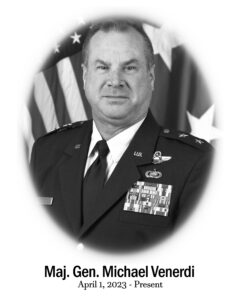


 First Sergeant Darrel W. Haeffele was born on September 25, 1940, in Falls City, Nebraska. He graduated from Atchison High School in 1958. He attended Concordia College in Seward, NE for two years before starting a career in retail.
First Sergeant Darrel W. Haeffele was born on September 25, 1940, in Falls City, Nebraska. He graduated from Atchison High School in 1958. He attended Concordia College in Seward, NE for two years before starting a career in retail. CW5 Roland E. “Ron” Kassebaum was born on February 21, 1946 in Deshler, Nebraska. He graduated from Hebron High School, Hebron, Nebraska in 1964. He attended Fairbury Junior College, Fairbury, Nebraska and the University of Nebraska, Lincoln, Nebraska, and received a Bachelor of Science Degree from the University of the State of New York in 1991. He later attended Liberty University, Lynchberg, Virginia, for courses in accounting and Allen County Community College, Iola, Kansas, for a course in Business Law.
CW5 Roland E. “Ron” Kassebaum was born on February 21, 1946 in Deshler, Nebraska. He graduated from Hebron High School, Hebron, Nebraska in 1964. He attended Fairbury Junior College, Fairbury, Nebraska and the University of Nebraska, Lincoln, Nebraska, and received a Bachelor of Science Degree from the University of the State of New York in 1991. He later attended Liberty University, Lynchberg, Virginia, for courses in accounting and Allen County Community College, Iola, Kansas, for a course in Business Law. Chief Warrant Officer Four Ronald E. Mullinax was born on August 25, 1946, in Norton, Kansas to Earl and Mary Posson. He was adopted by John and Ada Mullinax. He grew up in Lenora, Kansas, graduating from Lenora Rural High School in 1965. After completing a Denver Automotive Institute training program, Ron worked at Look Body Shop in Norton until 1968.
Chief Warrant Officer Four Ronald E. Mullinax was born on August 25, 1946, in Norton, Kansas to Earl and Mary Posson. He was adopted by John and Ada Mullinax. He grew up in Lenora, Kansas, graduating from Lenora Rural High School in 1965. After completing a Denver Automotive Institute training program, Ron worked at Look Body Shop in Norton until 1968. CCMSgt Valerie D. Benton was born on Dec. 10, 1959 in Racine, Wisconsin, where she spent her childhood. She graduated from Washington Park High School in 1978. Soon after graduation she enlisted in the U. S. Air Force and headed to Basic Training at Lackland AFB, Texas in December of 1978. After completion of Basic training, she attended Technical Training at Lowry AFB, Colorado, and graduated as a Food Service Specialist.
CCMSgt Valerie D. Benton was born on Dec. 10, 1959 in Racine, Wisconsin, where she spent her childhood. She graduated from Washington Park High School in 1978. Soon after graduation she enlisted in the U. S. Air Force and headed to Basic Training at Lackland AFB, Texas in December of 1978. After completion of Basic training, she attended Technical Training at Lowry AFB, Colorado, and graduated as a Food Service Specialist.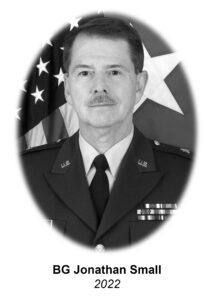 Brigadier General Jonathan P. Small served as The Adjutant General of Kansas from November 1, 2003 to January 4, 2004, culminating a 35-year military career as a distinguished attorney, community leader, citizen-soldier, and military leader. He served as Assistant Adjutant General-Army from 1999 to 2003, and as Commander of the Land Component for the Joint Force Headquarters-Kansas.
Brigadier General Jonathan P. Small served as The Adjutant General of Kansas from November 1, 2003 to January 4, 2004, culminating a 35-year military career as a distinguished attorney, community leader, citizen-soldier, and military leader. He served as Assistant Adjutant General-Army from 1999 to 2003, and as Commander of the Land Component for the Joint Force Headquarters-Kansas. General James H. Lane was a militia leader during the Bleeding Kansas period, the commander of the Kansas “Jayhawker” Brigade during the Civil War, and was one of the first United States Senators from Kansas.
General James H. Lane was a militia leader during the Bleeding Kansas period, the commander of the Kansas “Jayhawker” Brigade during the Civil War, and was one of the first United States Senators from Kansas. Sergeant Major Joseph T. “Jody” Muller was selected for the Kansas National Guard Hall of Fame for his exceptional service as a citizen soldier in the Kansas National Guard for over 41 years.
Sergeant Major Joseph T. “Jody” Muller was selected for the Kansas National Guard Hall of Fame for his exceptional service as a citizen soldier in the Kansas National Guard for over 41 years. Master Sergeant Greg Gilroy was born on July 25, 1947 at Ottawa, Kansas. He was a lifelong resident of Ottawa, graduating from Ottawa High School in 1965. He then attended Emporia State University during the 1965-66 school year.
Master Sergeant Greg Gilroy was born on July 25, 1947 at Ottawa, Kansas. He was a lifelong resident of Ottawa, graduating from Ottawa High School in 1965. He then attended Emporia State University during the 1965-66 school year.








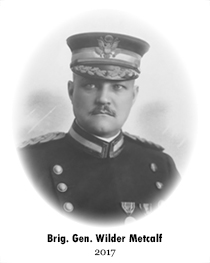

 Brigadier General Deborah Rose entered military service with a direct commission into the United States Air Force Nurse Corps in March 1983, assigned to the 184th Tactical Fighter Group. She transferred to the 190th Clinic in December 1985. In October 1990, she deployed to Jeddah, Saudi Arabia, where she served in an Air Transportable Hospital during Desert Shield. In February 1991, she was activated and deployed to Offutt AFB, Nebraska, assigned to the hospital.
Brigadier General Deborah Rose entered military service with a direct commission into the United States Air Force Nurse Corps in March 1983, assigned to the 184th Tactical Fighter Group. She transferred to the 190th Clinic in December 1985. In October 1990, she deployed to Jeddah, Saudi Arabia, where she served in an Air Transportable Hospital during Desert Shield. In February 1991, she was activated and deployed to Offutt AFB, Nebraska, assigned to the hospital.
 Sergeant Major Lynn E. Holt built his distinguished Kansas Army National Guard career developing strength, retaining Soldiers and insuring Soldiers received proper training. He served from the Detachment through State level. He is known for his ability to recognize Soldier needs at all levels. The same care he felt for Soldiers carried over into his community activities. SGM Holt’s passion for people and their needs exemplifies his true character. He devoted his entire adult life to the betterment of our nation, our state and the Kansas National Guard.
Sergeant Major Lynn E. Holt built his distinguished Kansas Army National Guard career developing strength, retaining Soldiers and insuring Soldiers received proper training. He served from the Detachment through State level. He is known for his ability to recognize Soldier needs at all levels. The same care he felt for Soldiers carried over into his community activities. SGM Holt’s passion for people and their needs exemplifies his true character. He devoted his entire adult life to the betterment of our nation, our state and the Kansas National Guard.



